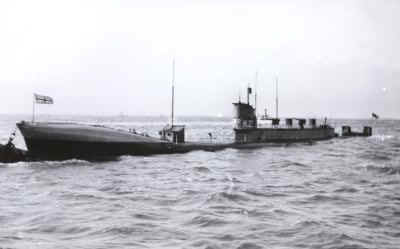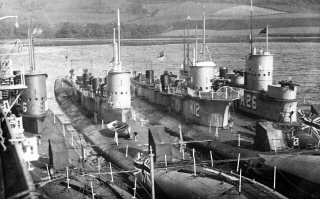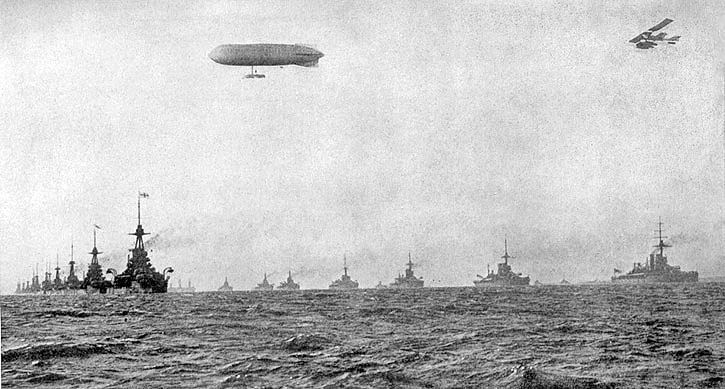
K Class submarines were
the most bizarre and ill-fated submarines of the First
World War period. Source
Pages 1-6
* * *
Your Research
Tasks * * *
These fascinating vessels were revolutionary in design. They were
made for the Royal Navy, for a specific tactical objective: to have
submarines fast enough on the surface to accompany the British
battle fleet in action. The intent was that they could be deployed during
battle as a sort of 'mobile minefield' and so wreak havoc on the
German fleet. The result was the K-class submarine.
To obtain this goal, they were propelled by steam- with boilers and funnels (chimneys)! At the time, they were not only the largest submarines in the world, but also the fastest, attaining speeds of 24 knots. They were in many ways ahead of their time.
But was the K Class of World War I submarine also jinxed.
From their beginning in the Spring of 1915, the K Class submarines were
beset with one disaster and tragic accident after another. K became to
stand for 'Killer', but not of the enemy, but of their own officers and
crew.
As you look and read through
the following web pages, think about these questions:
Dictionary.com
Why were the K submarines jinxed? Why did they suffer one disastrous
accident after another? What happened to the submarine K13? Why is
this British submarine remembered, with a large memorial built in
Carlingford, Australia? Why did these submarines have no impact on the
enemy, and yet cause the death of over three hundred of their own
officers and crew?

HMS Submarine K13 (recommissioned as K22)

K 13 Submarine Memorial, Carlingford, Sydney, Australia.



K 13 Submarine Memorial,
Glasgow, Scotland.

Lowering the funnels, preparing to submerge.


Firing
a torpedo

Diesel
smoke billows from the rear funnel of K5
.

To make them fast enough, the K Class submarines had oil-fired boilers.
These boiled water to produce steam, which powered geared steam
turbines. The turbines turned the propellers (screws), which propelled
the submarine. But because the submarines used oil fuel burning boilers,
they then needed twin funnels
or chimneys. These would fold over and be covered by water proof lids,
when the submarine wanted to dive under the water!


* * *
Your Assigned Tasks
* * *
Research Source Pages (6
pages)
2. My End's Diving - What The Hell Is Your End Doing?
3. The K13 Disaster:
From that day onwards
'K' stood for Killer
4. What happened to the rest of the K Class Submarines?
5. Map: where the K Class Submarines were built
6.
K13 Submarine Memorial – Carlingford,
Australia

Click to enlarge: HMS_Dreadnought_1906
4 Maps showing where the K 13 was built

British_Grand_Fleet
4 An animation of an Australian Submarine in action
Other Sites of Interest:
The
Australian Submarine AE2 fighting at Gallipoli...
Watch the animation on the above site
http://www.submarineinstitute.com/?doc=41
At
this site, click Submarine AE2 on the left.
Stop
Press. Turkey 2007 Expedition to recover the
AE2 underway.
Click here
for more information and news.
 |